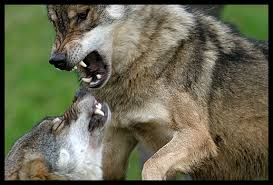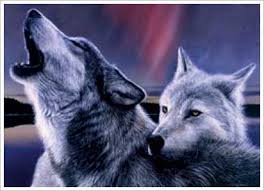Snow Foxs

 Patrolling vast expanses, this wanderer of the far north has adapted to cycles of feast or famine Let a raven drop a bone onto the ice or the aromas from a hunter's cook tent waft from a mile away, and a small white shadow will soon materialize to investigate—an arctic fox. Near Hudson Bay a fox's curious nose pokes around a knifelike ridge of ice. "It is the friendliest and most trusting of the North American foxes, although it is characterized . . . as 'impudent,'" wrote naturalist Barry Lopez.
Patrolling vast expanses, this wanderer of the far north has adapted to cycles of feast or famine Let a raven drop a bone onto the ice or the aromas from a hunter's cook tent waft from a mile away, and a small white shadow will soon materialize to investigate—an arctic fox. Near Hudson Bay a fox's curious nose pokes around a knifelike ridge of ice. "It is the friendliest and most trusting of the North American foxes, although it is characterized . . . as 'impudent,'" wrote naturalist Barry Lopez.In winter these small, almost delicate foxes range over huge areas seeking rodents or mammal carcasses. Some cross more than 600 miles (966 kilometers) of pack ice in 40-below-zero conditions. The species expanded in the Arctic at the end of the last warm inter- glacial period, about 120,000 years ago. Evolution equipped them with small ears, short muzzles, and thick fur to minimize heat loss. Their feet are fur-covered, like hares'—hence their scientific name,Alopex lagopus, or "hare-footed fox."
Play or predation? Hunting ringed seal pups born in small caves under the snow in Norway's Svalbard archipelago, a fox rears up, jumps on a den, and dives in head first. Pups often escape from the den into open water. The foxes' keen noses can detect such lairs more than a mile away. Near Hudson Bay, foxes tag along with polar bears in winter to scavenge leftover seal carcasses.
Arctic foxes' most vital food source—or lack thereof—is a little fur ball called the lemming. Problem is, the rodents aren't reliable. "They don't commit mass suicide: That's a myth popularized by an old Walt Disney film," says James D. Roth, an ecologist at the University of Central Florida who has studied Hudson Bay foxes. "But lemmings do follow a natural boom-and-bust cycle. About every four years they're super-abundant, then they crash for one year, and gradually increase until the next peak." With a circumpolar range, arctic foxes probably total several hundred thousand with wide fluctuations because of variations in the lemming populations.
Most arctic foxes turn white in winter, but some have brownish blue fur. Many blue foxes live in coastal areas, where they blend into dark backgrounds. Both color types live in Svalbard, where competition for mates rouses rivals in March.
Some parts of the arctic foxes' range, like Svalbard, have no lemmings, so foxes there feed on seabirds, geese, and their eggs in summer. In winter the opportunist foxes scavenge seal and reindeer carcasses. Compared with Hudson Bay, Svalbard's fox population is more stable. "But because they rely on marine species, they have high concentrations of contaminants like PCBs," says Eva Fuglei, a wildlife biologist at the Norwegian Polar Institute, who is studying the effect of the toxics on the foxes' disease resistance and reproduction
As wildflowers replace ice and snow, young foxes emerge from dens in July. Lemming numbers have a huge impact on litter size. In 2002, when lemmings crashed in much of Canada, photographer Rosing found two sleepy pups in a den of only seven on Victoria Island in the Canadian Arctic. The following year, when lemmings were plentiful, "this den near Churchill had 13 pups", says Rosing, "and it was littered with lemming and bird carcasses." One of the den's adults for ages to feed its young. These foxes have shed their white winter coats for the brown and cream fur of summer. Blue foxes also turn dark brown this time of year.
In good lemming years one female may have up to 20 pups, and local arctic fox populations boom. When lemming numbers plummet, many arctic foxes starve in winter, leading to fewer and smaller litters.
Fox in the goose house: With more than a dozen hungry pups waiting, a female heads home with a mouthful of month-old snow goose. Critical to foxes during lean lemming years, about 100,000 snow geese nest on La Pérouse Bay near Churchill. "I found 72 geese feet in one Churchill den," says ecologist James Roth
When the pups were about two weeks old, their mother moved them one by one to a new den. Heavy rain may have prompted her decision, or she may have sought a cleaner site. Dens are often used by many generations—for as long as 300 years. The burrow complex may spread over 500 square feet (47 square meters) and have a hundred entrances, offering the pups quick escape from predators. Owls and eagles prey on young and adults, as do red foxes, a species from the south that overlaps the arctic foxes' range. Red foxes, which are considerably larger, also compete with arctic foxes for denning sites.
In years when food is abundant, adults feed their young through the summer until autumn, when the pups disperse. In lean years the pups leave the den earlier, to hunt on their own in a land where success is never a sure thing.





